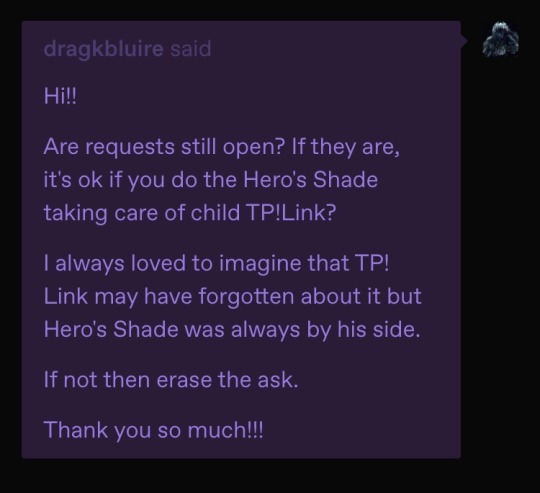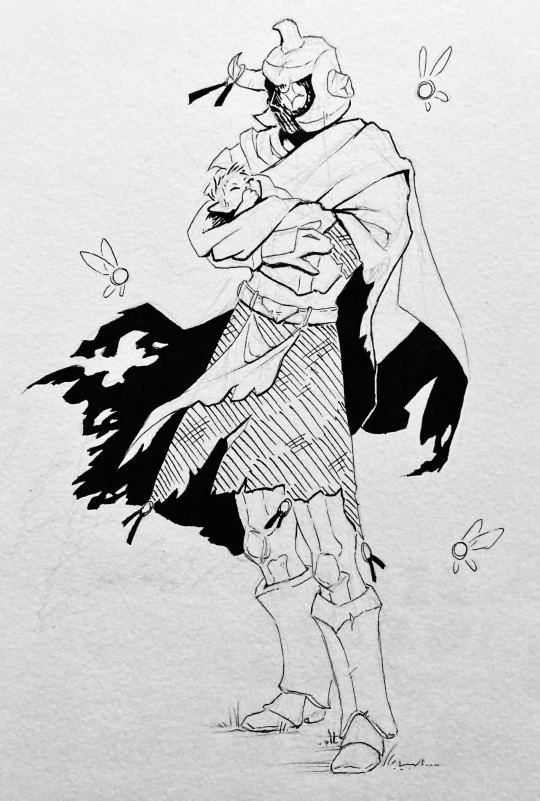#in a sort of parallel to OOT where he was left in the care of the Deku Tree. falls over
Explore tagged Tumblr posts
Text



He found a baby in the wreckage of a wagon train
Thanks for your requests, @waroferas and @dragkbluire !! I love getting to see you guys in my notes bdjshjsjdjd
#loz fanart#tp#twilight princess#hero’s shade#the legend of zelda#zelda#I always hc’ed that Shade was the one who brought Link to Ordon#in a sort of parallel to OOT where he was left in the care of the Deku Tree. falls over#anyway thank you for being patient guys I opened my rqs right as art slump set in LOLLLLL#I’m happy with this one tho. it was fun 🙏🙏
1K notes
·
View notes
Text
The Master Sword
The Master Sword is Link's signature weapon, and acquiring it is a major plot event in every game where it appears. The events leading up to it are typically framed as some sort of test of the Hero's worthiness, but it's what comes after that tells us what that worthiness actually means.
In OoT, Link acquires the Master Sword after collecting three gemstones and the magical item from which the game takes its name, which grant him entrance into a sealed chamber where the sword is kept. Only...he wasn't worthy after all, because he was too young. The Master Sword senses this and puts him in a kind of stasis for seven years, until he is old enough to wield it properly. It apparently knows what the characters in the game do not: Link is only a child and he should not have to do this. He is not ready. However, upon waking up fully grown, Link still is not ready, not really. His mind was asleep; it has not grown with his body. Now adults take him seriously and expect him to make good on promises he made in ignorance during the first phase of his adventure, but his maturity is an illusion. He still relies on Navi to guide him: he is still the same child who left Kokiri Forest as instructed by the Great Deku Tree.
This occurrence--the slumber imposed by the Master Sword--is the event in the game that most plainly illustrates the theme of traumatic premature adulthood. Link wakes to find himself suddenly (from his perspective) with an adult body, fully expected by society to perform adult responsibilities...and the world has also ended. With no Hero available to stop him, Ganondorf has taken over. He has demolished Hyrule Castle Town and turned the castle itself into his grim fortress, decimated the friendly peoples of Hyrule, and sent monsters to overrun Link's childhood home. Adulthood, in this game, is synonymous with ruin, and all because Link tried to take it on too soon.
The text of WW does not tell us precisely how old Link is (the game's creators eventually settled on 12 years old), but his short stature and high-pitched voice clips indicate prepubescence. If the Master Sword were going strictly by age, one would assume it would send him to sleep for at least a few years. But it doesn't--he draws it from its resting place and immediately uses it to clear Hyrule Castle of a horde of awakened monsters. Indeed, in this game it is the Master Sword that is not quite ready for the task at hand. Centuries spent untended have drained it of most of its power and Link must restore it, facilitating its literal growth--the first stage of the sword's re-empowerment has its crossguard sprouting into the familiar winged shape. (The parallel with the Rito in the same game earning their actual wings as a rite of passage should not be understated.) It is arguably Link who is the master, and the Master Sword is the pupil.
The Triforce of Courage
More MacGuffin than genuine source of power, the Triforce of Courage is not what makes Link the Hero so much as what proves that he already is the Hero. How he comes into possession of it varies considerably from game to game.
In OoT, Link receives the Triforce of Courage almost by accident. He inadvertently lets Ganondorf into the Sacred Realm, where the entire Triforce was kept, but because Ganondorf cares only for Power, the other two pieces of the Triforce find other hosts. Link does genuinely merit the Triforce of Courage, but it is Ganondorf's actions that directly bestow it upon him--actions that are only possible because, to put it bluntly, Link (and Zelda) effed up. Once again, his agency in the situation is limited.
In WW, by contrast, the Triforce of Power has been split into eight shards specifically in order to hide it from Ganondorf or another like him, and Link must track it down, piece by piece. Depending on the version of the game, either the shards themselves or the charts indicating their locations are scattered across the world, guarded by monsters and tricky puzzles. It takes a great deal of moxie, cleverness, and (in the original version) captured treasure for Link to retrieve all eight pieces and claim the mark of the Hero. He doesn't "receive" it--he takes it. More importantly, he takes initiative.
Next time: All things must come to an end, and the game's respective endings, with the departure of the guiding companions, have a lot to say.
I swear I could write a whole. Um. Essay. About the contrasts between OoT and WW in how they portray the process of growing up.
430 notes
·
View notes